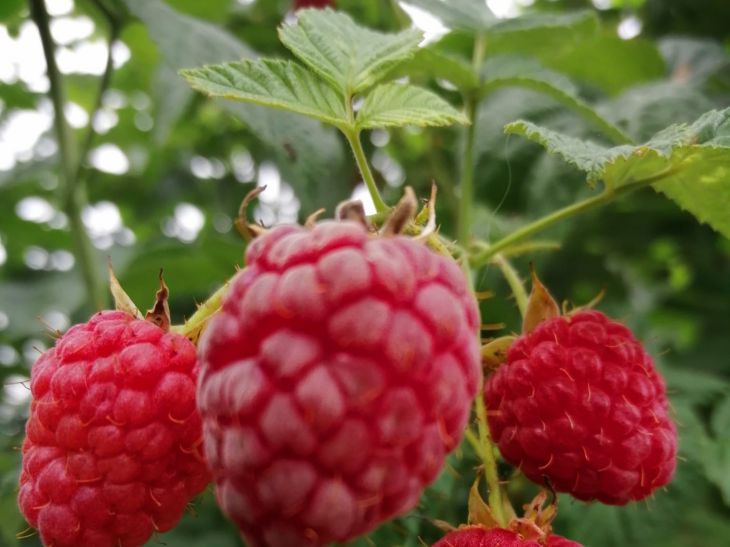How not to spoil raspberries in spring: 5 typical mistakes
Raspberries can grow in one place for up to 10 years. However, in order to get a good harvest every year, you need to properly care for the raspberry bushes throughout the season.
Raspberry care is especially important in the spring, when the plants wake up after winter and begin to grow actively. Today you will learn what you should not do with raspberry bushes in the spring, so as not to harm them and not lose the harvest.
Anastasia Kovrizhnykh, an expert of the online publication "BelNovosti", an agronomist and landscape designer, told how not to lose the raspberry harvest.
Don't forget to water the raspberries
Raspberries love moisture, especially during the flowering and fruiting period. Therefore, do not allow the soil under the bushes to dry out. Water the raspberries regularly and generously, but do not flood them.
It is best to water raspberries at the root or through a drip irrigation system. Use clean, chlorine-free water at room temperature for irrigation.

Don't skip feedings
Raspberries need nutrition to grow well and bear fruit. The first feeding is done in early spring, when the first leaves appear. For this, you can use complex nitrogen-containing fertilizers or organic ones (for example, humus or a solution of chicken manure).
The second feeding is done during flowering, using phosphorus-potassium fertilizers or a solution of succinic acid. The third feeding is done after harvesting, adding ash or superphosphate under the bushes.
Don't ignore pruning
Raspberry pruning is a necessary procedure that promotes bush renewal, the formation of fruit shoots, and the prevention of diseases and pests. Raspberry pruning is carried out twice a year: in autumn and spring.
Autumn pruning involves removing all shoots that bore fruit this year.
Spring pruning involves removing weak, frozen, damaged and excessively thickening bush shoots. It is also necessary to pinch the tops of fruit shoots by 10-15 cm for better development of lateral branches.
Don't neglect mulching
Mulching the soil under raspberry bushes is an effective way to retain moisture, prevent weed growth, protect roots from temperature changes and enrich the soil with organic matter.
Peat, compost, straw, sawdust or other available materials can be used for mulching. The mulch layer should be thick enough (10-15 cm), but not too dense so as not to disrupt the air permeability of the soil.
Don't forget to treat raspberries against pests
Raspberries are susceptible to various diseases and insect attacks, which can cause serious damage or even destroy the harvest. Therefore, it is necessary to carry out preventive and therapeutic spraying of bushes with special preparations.
In spring, it is advisable to treat raspberries before the buds open against anthracnose, white spot and spider mites with a solution of ferrous sulfate (100 g per 10 l of water) or Bordeaux mixture (100 g per 10 l of water).
During the flowering period, you can spray raspberries with biological preparations (for example, phytosporin or baktofit) against gray mold and oidium. After harvesting, you can repeat the treatment with iron sulfate or Bordeaux mixture.
By following these simple rules, you can grow healthy and fruitful raspberries on your plot!
